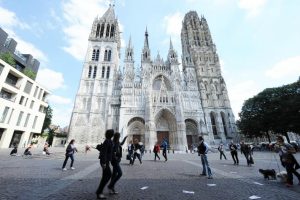
8 reasons to visit Rouen Cathedral (and why it’s the best place in Normandy)
We share with you the 8 reasons to come and visit Rouen’s Cathedral which is a must if you come to Rouen or Normandy.
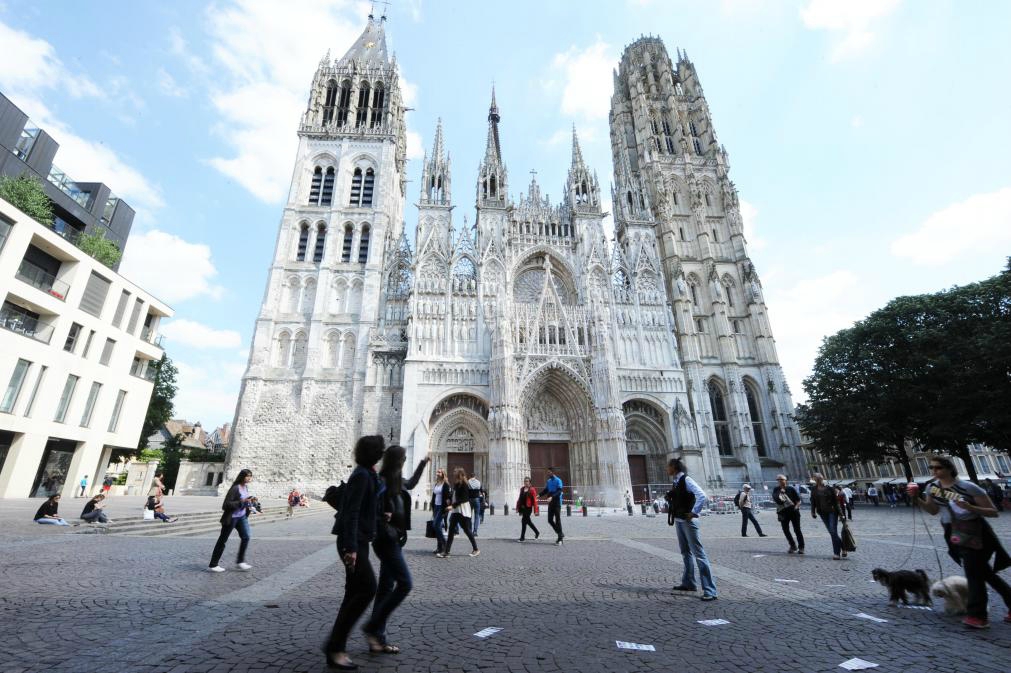
Cathedral of Rouen is known to be a very large and very long monument. Above all, it was for a few years the tallest monument in the world. But that’s not his only interest.
We share with you the 8 reasons to come and visit Rouen Cathedral which is a must if you come to Rouen or Normandy.
Its dimensions reflect the high rank of the Archbishop of Rouen, Primate of Normandy.
The building is also commensurate with the importance of Rouen, capital of the former Duchy of Normandy and long second city of the Kingdom of France.
In addition, this 4th century church is still the oldest Christian monument in Normandy today. Small tip:
We invite you to go to the Sainte-Catherine coast to have a breathtaking view of the city and realize how much the Cathedral dominates the city.
You will discover a monument of considerable size, it crushes the city with its 144 meters long and 151 meters high
What is a canon?
According to Wikipedia’s definition: A canon is a member of the secular clergy attached to the chapter of a church or cathedral with a function to perform such as teaching, helping the poor, choir, building, etc.
In Rouen, there were fifty of them, it was these religious who decided on the work to be undertaken and provided for their financing.
It was they who, chanting the canonical hours every day in the choir, occupied the building, more than the archbishops who were often absent from the city.
It is the canons who defined the liturgical life of the monument, organizing the major religious festivals and processions.
The canons played a decisive role in the construction of the Cathedral.
A little anecdote: In Rouen, go visit the rue des Chanoines. 😉
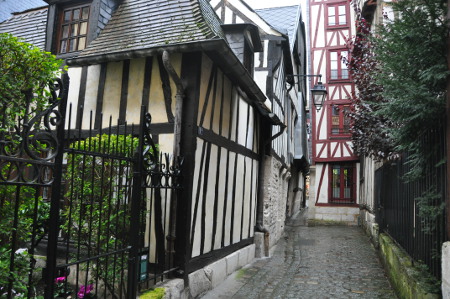
One of the important dates on the calendar was the Ascension.
On this occasion, the canons pardoned a condemned man who was languishing in the Rouen prisons.
This exceptional privilege (only the king theoretically has the right to pardon for death sentences) was supposed to recall a legendary episode in the history of the city.
In the 6th or 7th century, an aquatic monster called the Gargoyle lived beyond the city walls, where it terrorized the inhabitants by devouring them and sinking their boats.
Saint Romain decided to intervene but he only found one condemned to death to accompany him to the Gargoyle lair.
The prelate took the beast and put his stole around its neck.
Immediately the Gargoyle lost all ferocity. Saint Romain let the prisoner take the monster to the town where he was burnt.
A word of advice: We invite you to look up to discover the gargoyles on Rouen Cathedral.
Moreover, you will discover gargoyles all over the city’s various monuments, such as the Abbey of Saint-Ouen or the Palais de Justice.
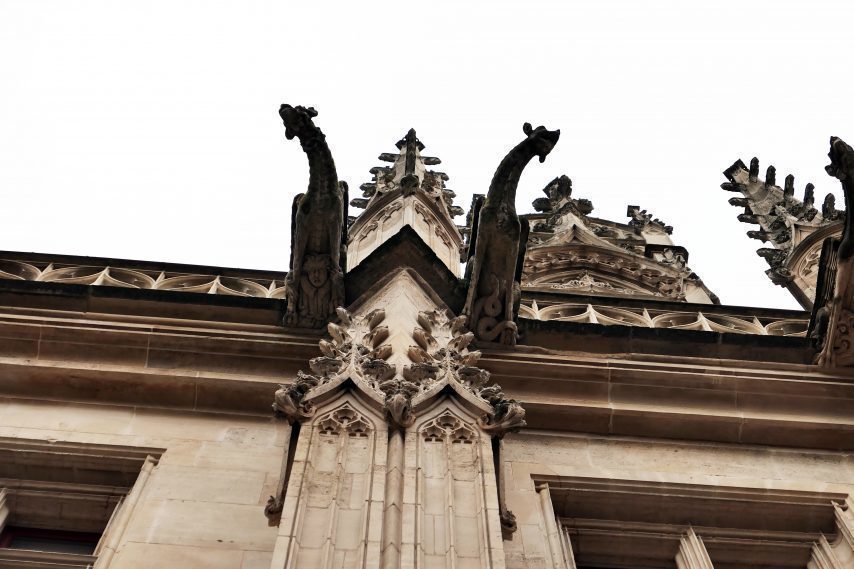
Most of the construction is in freestone, mainly Cretaceous chalk: rock typical of this part of the region.
Chalk is a soft and very white limestone with a fine and homogeneous grain, easy to work and to sculpt.
But unfortunately it is also a frost stone which is quite resistant to time.
This explains why the Cathedral is fragile.
The Place de la Cathédrale is located in the center of the 4th century Gallo-Roman castrum, at the crossroads of the cardo (current rue des Carmes) and the decumanus (axis of the rue du Gros-Horloge).
Rouen Cathedral has a nickname ““Our Lady of the 7 shells””, given after the bombings of April 19, 1944.
Two masses are celebrated every Sunday at half past eight and half past ten, the second accompanied by the choirs of the Maîtrise Saint-Évode.
During the week, masses take place at ten o’clock in the Albane chapel located in the sacristy.
The heart of Richard the Lionheart is in the ambulatory, the famous English king. Surprisingly, he is buried in 3 different places. In Rouen, there is only his heart.
The cathedral has inspired many artists, the best known remaining Claude Monet through the 28 paintings. During the 1890s, Claude Monet worked on several series of paintings representing the same subject.
Perhaps the best-known series is the one representing the facade of Rouen Cathedral.
Monet paints 28 different versions (the two which complete the series, 30 in all, represent the court of Albane), made with variable light according to the different times of the day and the climatic conditions of the moment.
Three distinct places will serve as points of observation and creation for the artist, which gives three different perspectives: the first two canvases will be painted from the half-timbered house, now plastered, at the corner of the street du Gros-Horloge, the following are made from a window on the first floor of the former Finance Office (Tourist Office) which was at the time a large clothing store.
The last canvases are painted from a house on rue Grand-Pont, which disappeared with the Second World War.
He actually finished a number of these paintings later in his studio in Giverny.
Richard Parkes Bonington represents her in View of Rouen from the Seine in a painting dating from 1822. Later, Camille Pissarro included it in 1896 in his painting Les Toits du vieux Rouen, Notre-Dame cathedral and in 1898 in Rue de l’Épicerie, Rouen.
In 1969, the American painter Roy Lichtenstein produced a triptych on the cathedral entitled Rouen Cathedral Set V.
This canvas made with oil paint and acrylic paint is divided into three equal parts.
Each part represents the facade viewed at an angle with bright colors (different for each of the three elements of the triptych) and large dots, similar to a grid, particularly characteristic of the artist’s work.
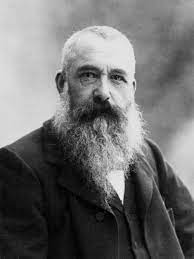
If you are looking for a fun and recent activity that has settled in Rouen, it is Panorama XXL.
The XXL panorama will be dismantled in September
The work will take you back to the 15th century for a unique and unusual discovery of city life.
You will discover some major scenes from the life of Joan of Arc that took place in Rouen The Saint-Romain tower is represented under construction.
The lantern tower is represented with the Aiguille de Rouen.
This representation is above all an artistic work rather than a historical representation.
This work was produced by Yadegar Asisi.
The Rouen Cathedral series was painted in the 1890s by French impressionist Claude Monet. The paintings in the series each capture the façade of the Rouen Cathedral at different times of the day and year and reflect changes in its appearance under different lighting conditions.
The Rouen Cathedral paintings, more than thirty in all, were made in 1892 and 1893 in Rouen, Normandy, then reworked in Monet’s studio in 1894. Monet rented spaces in Rouen across the street from the cathedral as his temporary studio.
In 1895 he selected what he considered to be the twenty best paintings from the series for display at his Paris dealer’s gallery and sold eight of them before the exhibition was over. Camille Pissarro and Paul Cézanne visited the exhibition and praised the series highly.
“The climax of Impressionism” . This is how Claude Monet’s series of views of Rouen Cathedral painted between 1892 and 1894 has been described. The series – consisting of 31 canvases showing the façade of Rouen’s Gothic cathedral under different light and weather conditions – provoked immediate admiration among the critics of its time, and was praised by many later masters, from Wassily Kandinsky to Roy Lichtenstein.
If you are ready to discover Rouen, make a reservation of our private tour now!

We share with you the 8 reasons to come and visit Rouen’s Cathedral which is a must if you come to Rouen or Normandy.

Nous partageons avec vous les 8 raisons de venir visiter la cathédrale de Rouen qui est un must si vous venez à Rouen ou en Normandie.
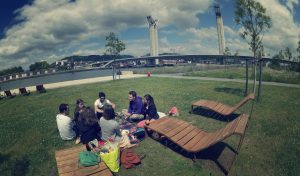
Rouen is in Normandy and is the capital of Normandy.
Rouen is in the north of France and at 1h30 by train of Paris.
You can see specifically where is Rouen with the map: